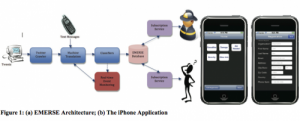
Printing Weapons at Home for Fun and Mayhem
It's now possible to print functional weapons at home. This is going to progress rapidly now.
Think: global file sharing of designs for servicable weapons, from pistols on up to ?, that can be printed at home. What you can print — from the materials to the size/quality of the object to the completeness (snap together construction) — is already moving forward quickly. The weapons effort will just be along for the ride.

“HaveBlue” has tested the first “printed” firearm and it works. Here's his site, but it's VERY slow. It didn't blow up in his face.
Granted, he used an older professional grade Stratys 3D printer to do it. Printeres are much better now and handle many new materials.
Haveblue has been testing the “market” for distributing CAD/CAM weapons designs. His post of an earlier design to Thingverse (a site for 3D printing design patterns) led to a change in their policy (although it hasn't been enforced).

Haveblue's work is based on the Solidworks files available for download from the CNCguns site. Here's his earlier project:
Phi Beta Iota: Violence should be a last resort — publics today are far from fully exploiting the use of public intelligence in the public interest. However, it bears mention that both Gandhi and Martin Luther King were quite clear: non-violence is preferable to violence, but violence is preferable to continued oppression. Most governments, including the European governments still favoring banks over people and refusing to honor the Iceland model, no longer represent their publics and have lost all legitimacy in the eyes of many. We pray they will awaken to the reality that those governments that do not empower, protect, and respect the public, will ultimately be abolished. In the meantime, they are merely ignored.






